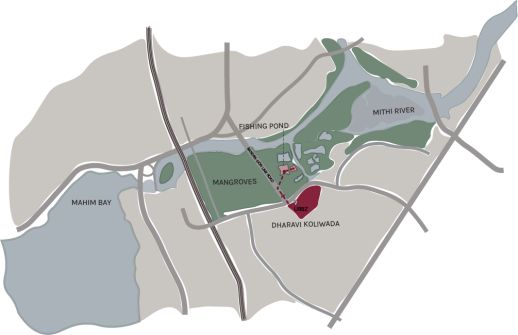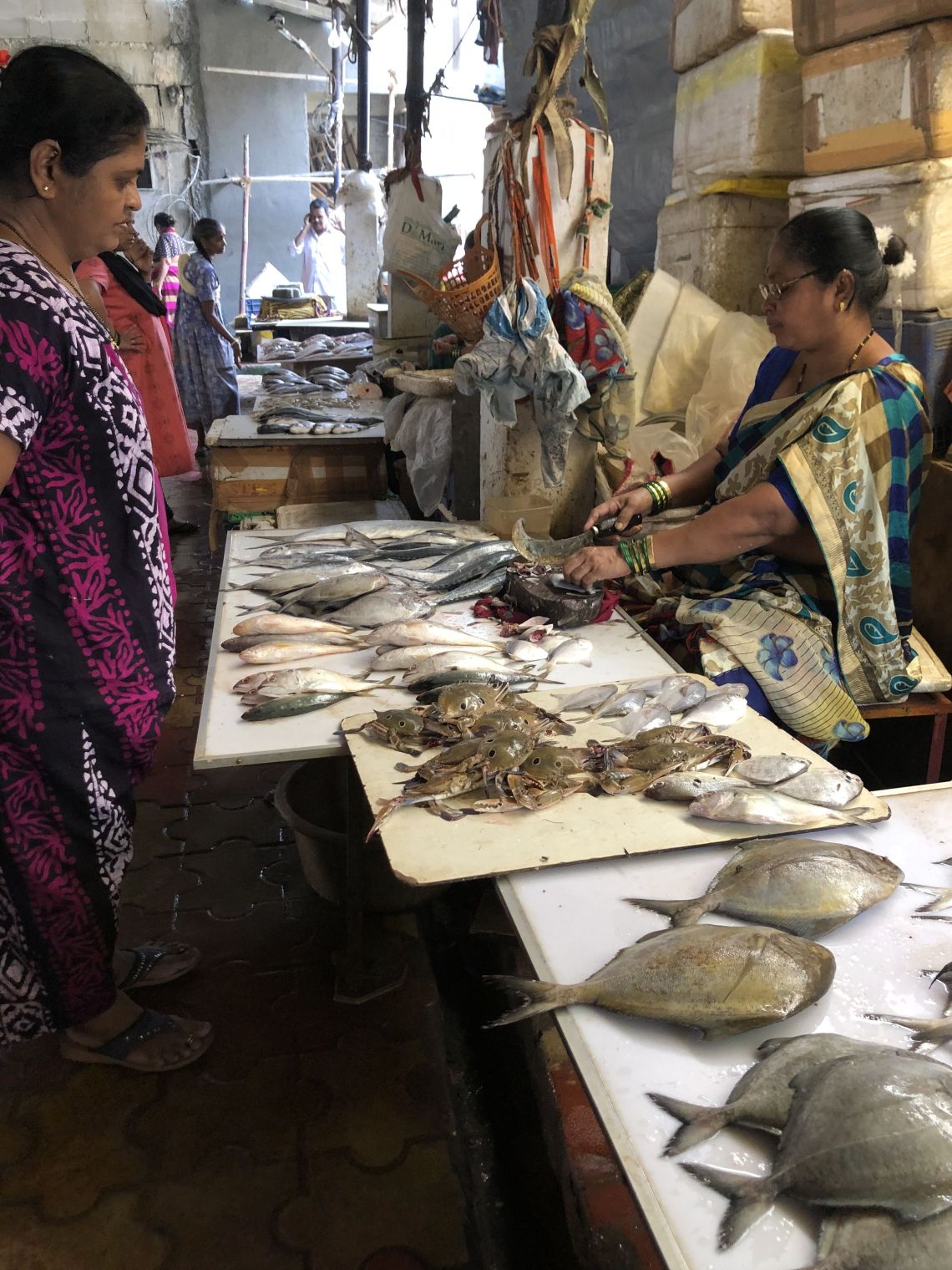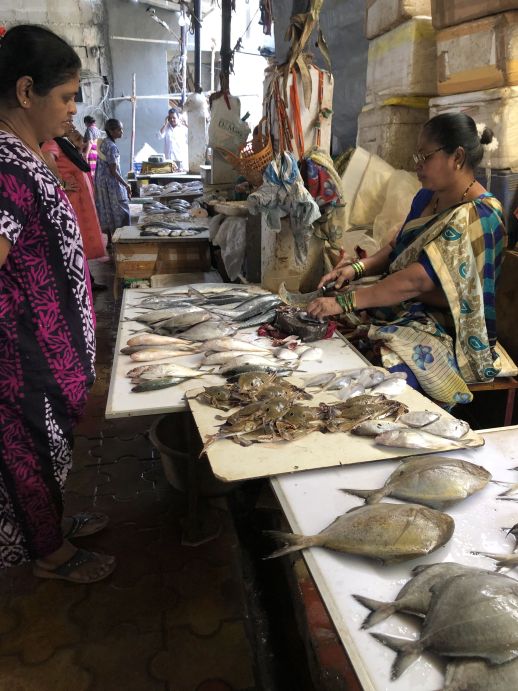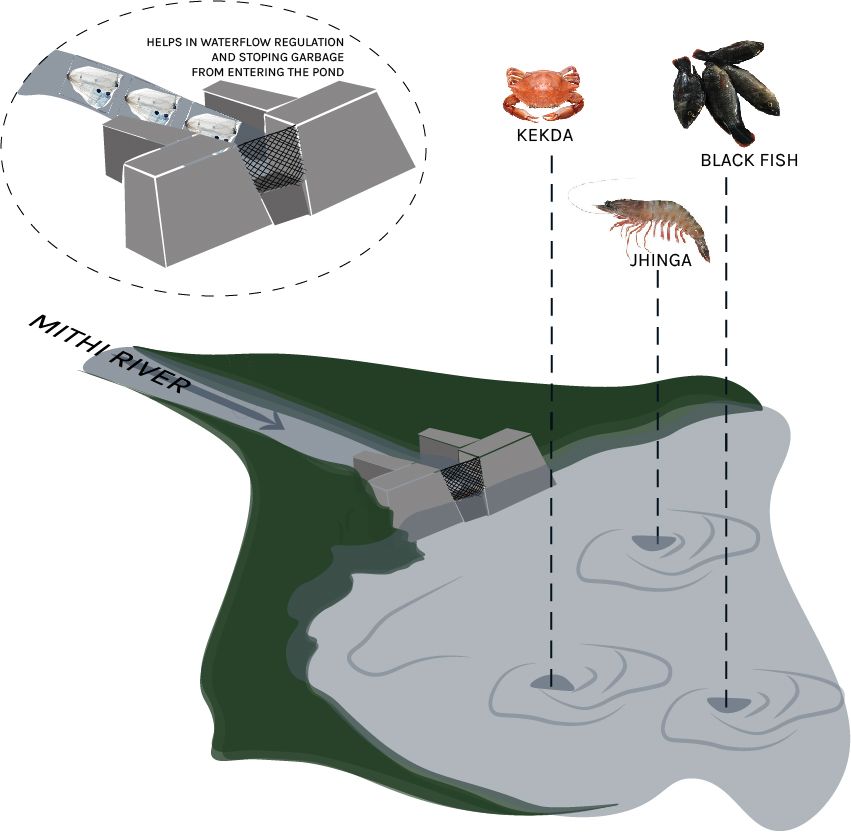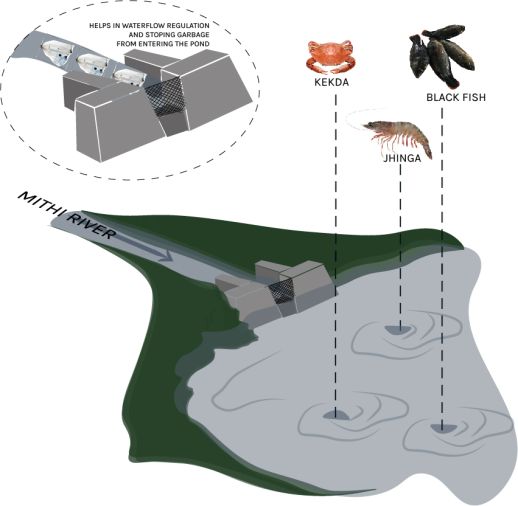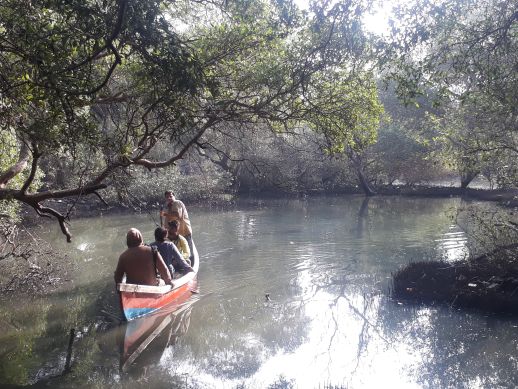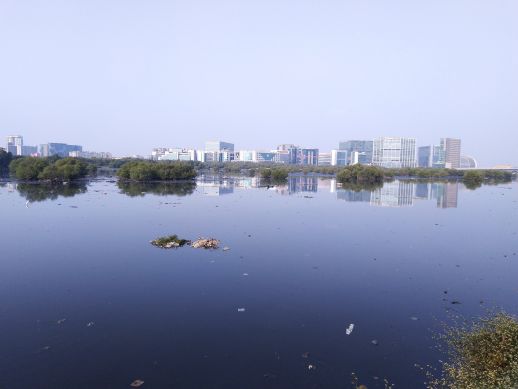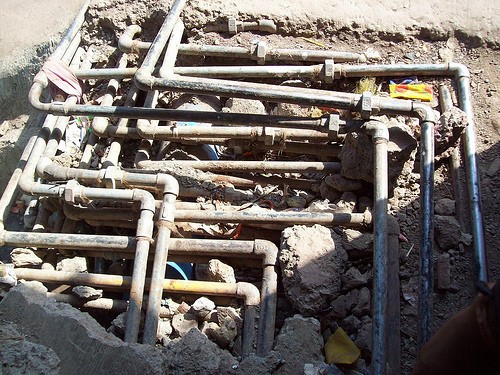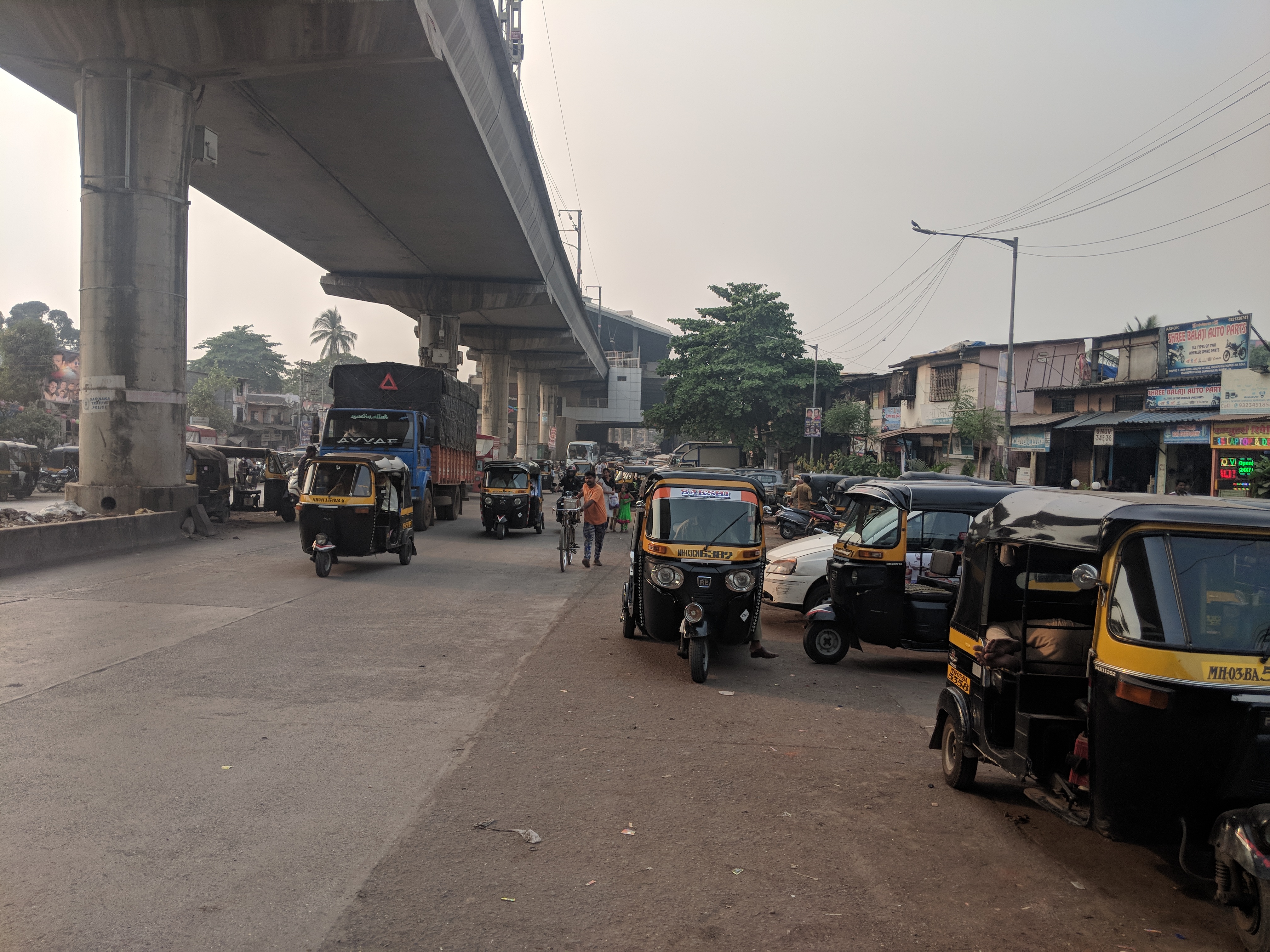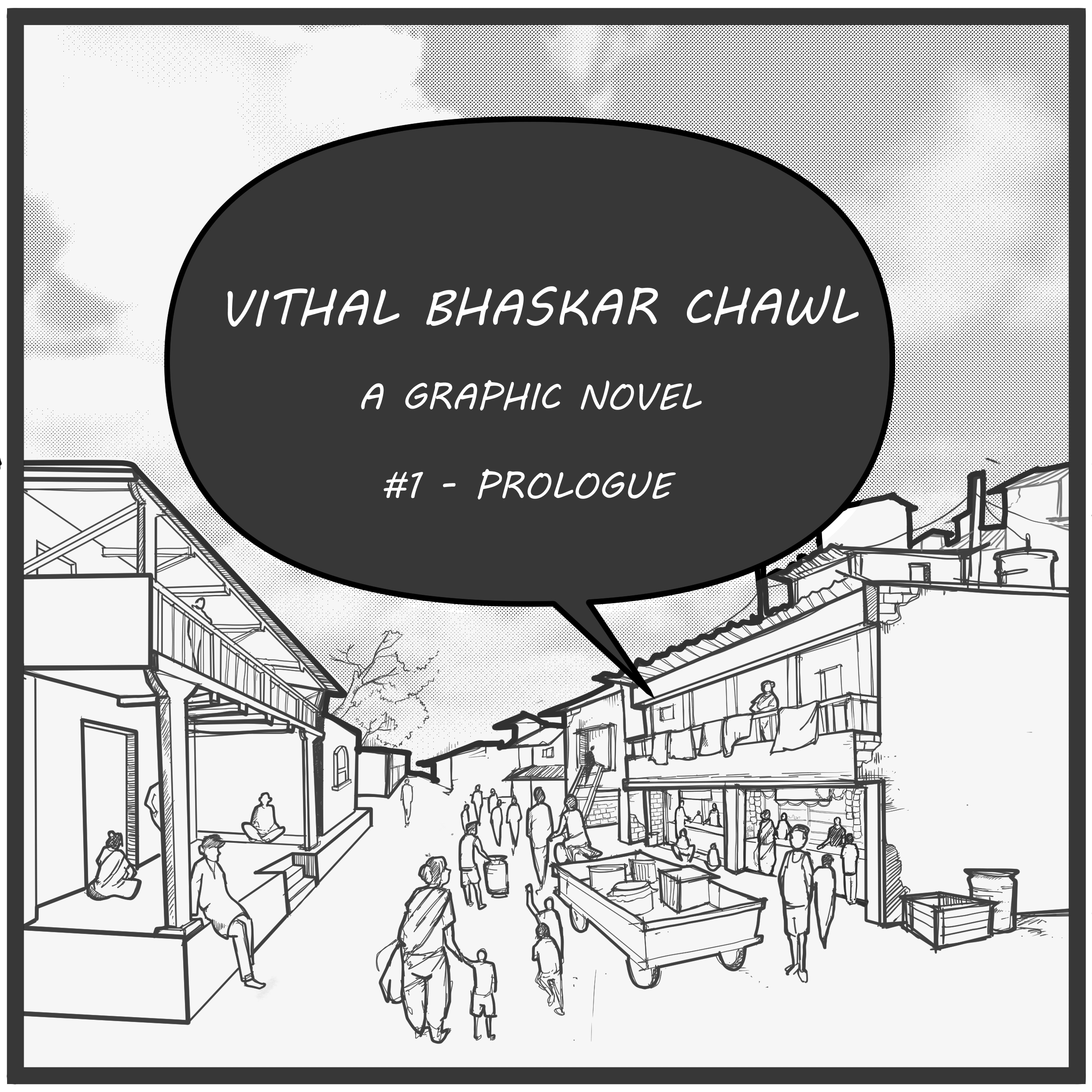Towards a mangrove economy
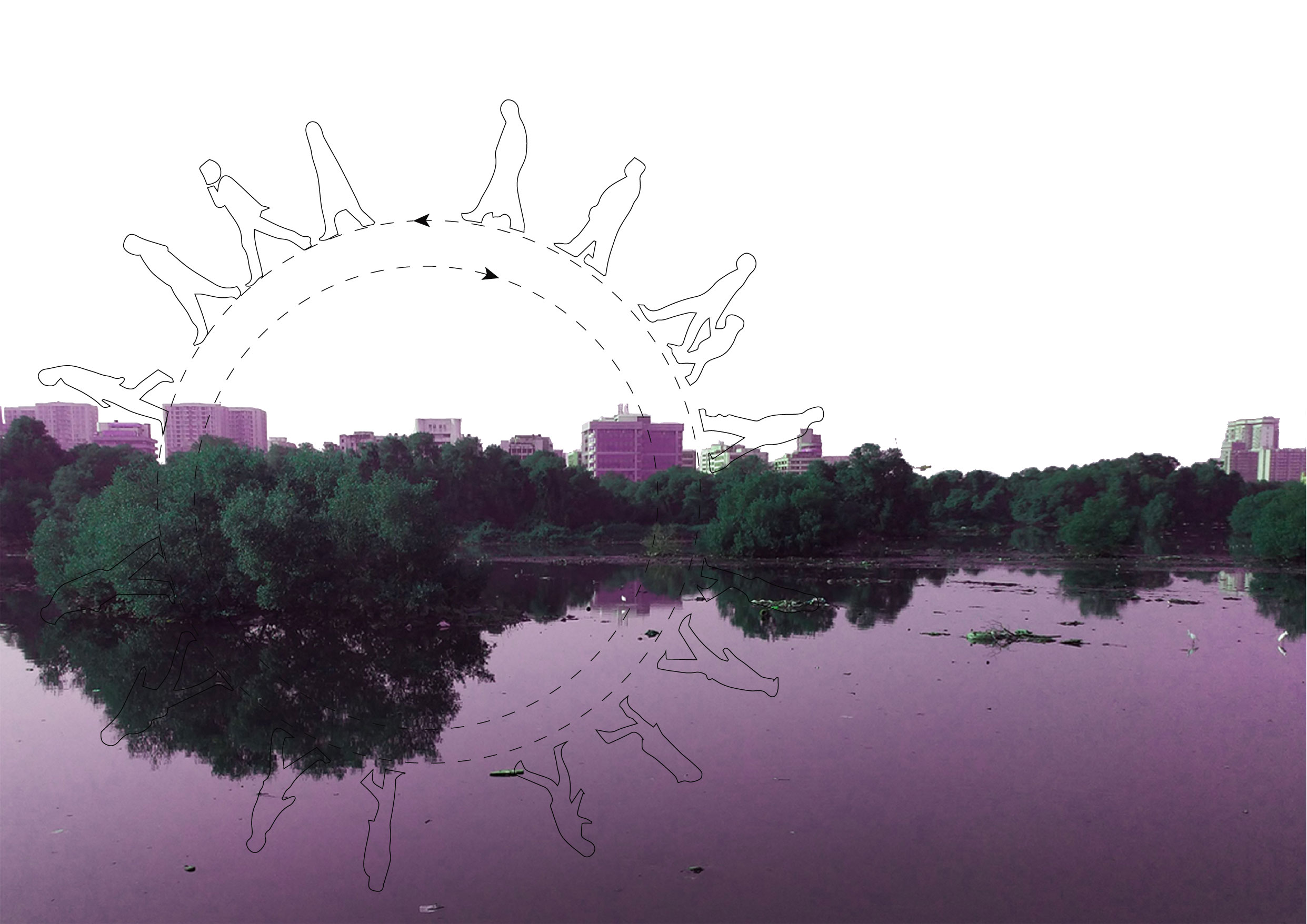
Towards a mangrove economy
The mangroves of Mumbai are a metaphor for Dharavi - both have managed to survive and thrive in areas where others cannot, are tolerant of difficult conditions, are extremely productive, have far-reaching influence and provide the foundations for larger ecosystems. Both of them are important in the functioning of larger systems and are often taken for granted. Considering the ecological, cultural and historical importance of mangroves to Dharavi and the rest of Mumbai, more needs to be done to foster public understanding of mangroves, as well as provide an economic incentive to maintain them.
The lack of acknowledgement of the mangrove economy leads to a classic conservation approach towards natural habitats. For example, in 2011 the Coastal Regulation Zone was reinforced to restrict some industries and other activities in the mangroves. Construction within 50m of mangroves was banned; nevertheless these restrictions are often violated and modified in favour of real estate lobbies. The rule was reinforced with the intention of protecting the mangroves, however the absence of the public gaze and involvement becomes a major shortcoming of conservation policies. This needs to be addressed, especially in urban areas. If the urban mangrove forests are to thrive we need to adopt policies that are less prohibitive and more interactive. The city should maintain age old local interactions and be open to the possibility of new ones.
Conservation or integration?: The case of Dharavi’s Kolis
As much as landscapes are natural they are also culturally produced. Indigenous communities all over the world have co-evolved with their natural environments. The Aborigines of Australia tended to the landscape of the continent as they made their seasonal journeys across the land mass, shaping the present Australian landscape. Similarly, in India, there are diverse communities dwelling in and producing diverse landscapes.
At urbz we recognise this human contribution to the landscape and want to promote the integration of mangroves into our economic systems in ways that sustainably use and manage them, rather than protecting them by keeping humans out. An integrative approach towards mangroves as opposed to the classic conservation approach could ensure a truly sustainable future for the city of Mumbai.
We have observed a traditional human-nature relationship that exists between Dharavi Koliwada - an indigenous fishing village, and the mangroves of the Mithi river. This integration is part of the local economy, ensuring that the Kolis (fisherfolk) who depend on them are invested in maintaining them. In our previous article ‘Expedition Mangrove’ we wrote about our visit to the ponds that the Kolis have constructed in the mangroves. Our guides, Wilson and Vinayak explained how they have devised mechanisms and practices to keep the ponds clean enough to maintain a breeding fish population. This is the kind of integration and connection that we believe needs to be increased between people and mangroves.
Koliwada depends on fishing in the mangroves for their livelihood. During the Monsoon season when Kolis and other fishermen can’t venture out and fish in the sea, fish from these man-made Koli fishing ponds are sold in other Koliwadas. The men are responsible for fishing while women sell the catch. The fishermen go to the ponds every Monday, Wednesday and Friday to clean the ponds and catch fish. This catch is then sold to women at the market, who sell them at fish markets.
Over the years, insensitive development and urbanisation have degraded the health and quality of mangroves, making it difficult for the Kolis to use and maintain mangrove forests near the Mithi River. Generally, this practice and connection with the mangroves and fishing would be passed down generations. Although some of the younger generation is interested in this traditional practice and want to continue it, the degradation of the mangroves and ponds is making it difficult to sustain solely on fishing. The young Kolis are taking up other full-time jobs to sustain their households. In the future there may thus be less time and economic support for Kolis to clean the fishing ponds.
Mangroves for the city
Mangroves should be seen as part of the infrastructure of Dharavi and Mumbai at large. Apart from being a rich breeding ground of fish for the Kolis, mangroves have a diverse range of uses which can benefit many industries of Dharavi. Mangroves are often fast-growing and provide ready sources of wood, leaves, fruit, and roots. The wood is also a good building material as it is rot-resistant, termite-resistant and can tolerate salt water - the wood could be an ideal building material for making Dharavi water- and climate-proof. It could be used by Kolis as a sustainable source for fishing practices like building traps, docks, water-proofing fishing lines and curing fish nets. Mangrove wood is very dense and releases a lot of heat when burned, making it an ideal fuel as wood or charcoal. It could be an alternative source of energy for the pottery kilns of Kumbharwada. At the moment the kilns are fueled by synthetic textile waste, a much more dangerous pollutant than fuelwood. Natural dyes that derive from the bark of some mangrove species can be used in dyeing fabrics and leather products in Dharavi’s leather industry.
Mangroves protect coastlines from flooding, storm-surges and erosion - events that are likely to become more frequent as the world’s climate changes. Therefore they are an asset which protects the city’s infrastructure and even property values. Another potential of the mangroves could be in wastewater treatment of the neighbourhoods situated next to them. Mangroves have the capacity to filter heavy metals and other pollutants without much damage to their own growth. It is evident that mangroves have large varieties of functions which can support their integration into local urban economies.
By encouraging the responsible use of mangroves, both at the neighbourhood and city scale, we can foster social, cultural, economical and ecological connections between people and mangroves, encouraging the care of urban mangrove forests. Innovation in the way we perceive and interact with natural habitats will be crucial to planning our cities, where a host of primary, secondary and tertiary human activities can thrive with nature instead of against it.

